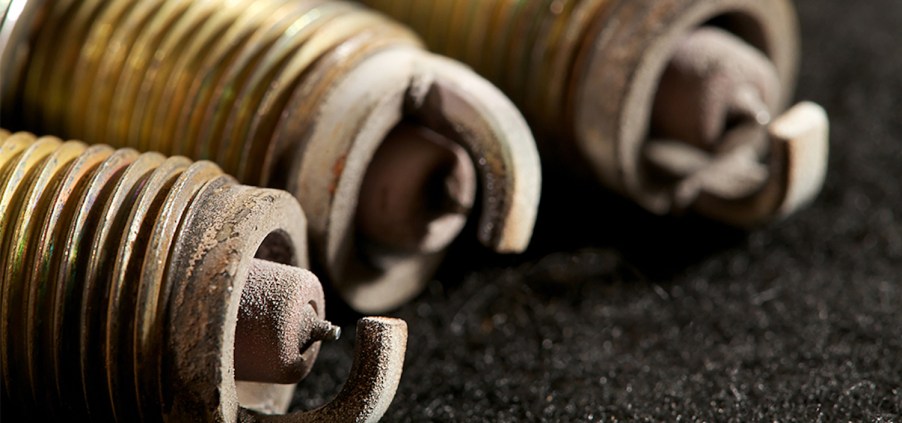
How to ‘Read’ Your Spark Plugs To Learn Your Engine’s Secrets
One spark plug protrudes into each cylinder of your gasoline-powered engine. When you remove these plugs during standard maintenance, the condition of each one can clue you into the condition of both that individual cylinder and of the engine as a whole. Learning to ‘read’ the state of your used spark plugs may give you a glimpse into your engine’s secrets without a costly teardown. Here are a few spark plug conditions and the problems they can signify.
| Spark Plug Condition | Cause |
| Heavily worn center electrode | The spark plug is simply worn out by overuse |
| Electrodes are black, dry, and soot-covered | Rich fuel mixture (too much fuel) |
| Cleaner than all the other plugs | Coolant may be leaking into that cylinder |
| Electrodes coated in dry, sand-textured deposits | Atomized engine oil leaking in through a valve seal or valve guide |
| Electrodes coated in greasy black deposits | Liquid engine oil leaking in through piston rings |
Is engine oil leaking into your cylinders?
The condition of your spark plugs may signal that engine oil is leaking into your engine’s combustion chambers, mixing with the air and gasoline, and igniting. If left unchecked, this problem could run your engine out of oil and cause expensive damage.

Under normal conditions, the sump at the bottom of your engine is full of oil to lubricate your main shaft and pistons. Your oil pump also moves some of this oil to the top of the engine to lubricate the moving parts of the valves that allow air and gasoline into each combustion chamber.
If your spark plug electrodes are covered in greasy black gunk, liquid oil is likely flowing into your combustion chambers and sticking to your plugs–according to MotorWeek. This liquid oil is either slipping past the piston rings that create a seal between the bottom of the combustion chamber and the sump or seeping in through a leaking head gasket at the top of the combustion chamber.
If your spark plug electrodes are covered in dry deposits that are lighter colored and have the texture of sand, you have a very different oil problem. This means the pressurized oil at the top of your engine is spraying into your combustion chamber. Either malfunctioning valve seals or valve guides are to blame.
Is antifreeze engine coolant leaking into your cylinders?
When a vehicle’s head gasket wears out, the liquid antifreeze coolant that flows through the engine block may seep into its combustion chambers. One of the signs that this is happening may be one spark plug that, when examined, is much cleaner than the plugs in all the other cylinders.

Why would a clean spark plug signal a leak? Because engine coolant (antifreeze) is mostly water so as it enters the hot combustion chamber, it turns to steam. This steam then cleans off the end of the spark plug. Remember, if all your spark plugs look clean, you probably don’t have a problem–especially if you have new plugs.
Is your engine running rich?
Are you suffering from low fuel mileage? Can you smell gasoline coming out of your tailpipe? You may have a malfunctioning injector or fuel management system, causing the engine to run “rich.” Another indicator is spark plug electrodes covered in black, dry soot.
Examine all your spark plugs. If only one is covered in black, dry soot, this problem is probably limited to one cylinder. This would point to that cylinder’s fuel injector. But if all your spark plugs show the same symptoms, the fuel management system may be malfunctioning.
Next, learn how to clean and re-gap your spark plugs, or see a breakdown of “reading” your spark plugs in the video below:






